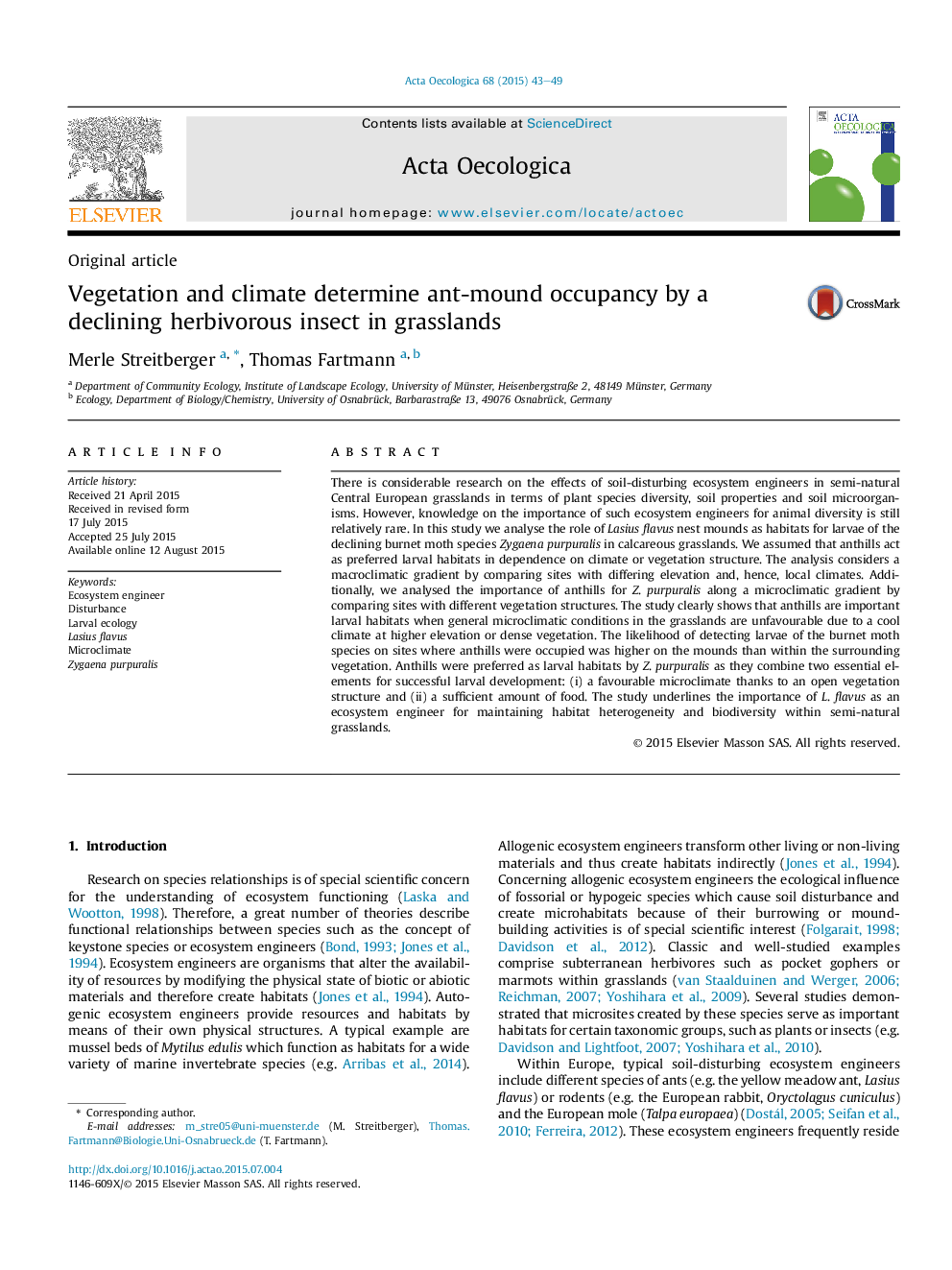| Article ID | Journal | Published Year | Pages | File Type |
|---|---|---|---|---|
| 4380903 | Acta Oecologica | 2015 | 7 Pages |
•Lasius flavus anthills represent important habitats for larvae of Zygaena purpuralis.•This especially holds true for sites with a cool microclimate or dense vegetation.•Anthills offer a favourable microclimate for the larvae thanks to open vegetation.•Furthermore, these sites are characterized by a high amount of host plants.
There is considerable research on the effects of soil-disturbing ecosystem engineers in semi-natural Central European grasslands in terms of plant species diversity, soil properties and soil microorganisms. However, knowledge on the importance of such ecosystem engineers for animal diversity is still relatively rare. In this study we analyse the role of Lasius flavus nest mounds as habitats for larvae of the declining burnet moth species Zygaena purpuralis in calcareous grasslands. We assumed that anthills act as preferred larval habitats in dependence on climate or vegetation structure. The analysis considers a macroclimatic gradient by comparing sites with differing elevation and, hence, local climates. Additionally, we analysed the importance of anthills for Z. purpuralis along a microclimatic gradient by comparing sites with different vegetation structures. The study clearly shows that anthills are important larval habitats when general microclimatic conditions in the grasslands are unfavourable due to a cool climate at higher elevation or dense vegetation. The likelihood of detecting larvae of the burnet moth species on sites where anthills were occupied was higher on the mounds than within the surrounding vegetation. Anthills were preferred as larval habitats by Z. purpuralis as they combine two essential elements for successful larval development: (i) a favourable microclimate thanks to an open vegetation structure and (ii) a sufficient amount of food. The study underlines the importance of L. flavus as an ecosystem engineer for maintaining habitat heterogeneity and biodiversity within semi-natural grasslands.
